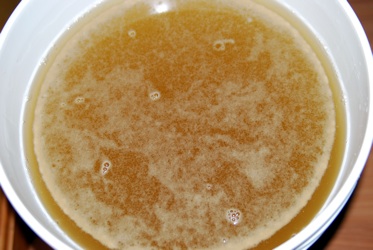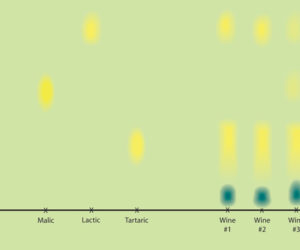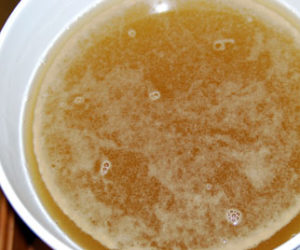
Without yeast, there can be no wine. But the role of wine yeast goes well beyond alcoholic fermentation — the biochemical process of converting sugar into ethyl alcohol and carbon dioxide.
Yeast is what gives wine its character, aromas, flavors and mouthfeel. (In some cases, bacteria play a role, too.) It also impacts color and synthesizes a myriad of by-products that interplay to create a most pleasant, flavorful beverage. But those by-products can also potentially lead to faults or outright spoilage if fermentation is not managed properly. So, learning about yeast metabolism can help winemakers make better wine.
In winemaking, the yeasts of choice are strains of Saccharomyces cerevisiae (S. cerevisiae). EC-1118, K1-V1116, BM4X4 Pasteur Red and Steinberg-Geisenheim are examples of strains from various yeast producers; each is adapted and recommended for specific varietals, wine styles and fermenting conditions.
Here, we examine the biochemistry of S. cerevisiae yeast to get an appreciation of some of the most important enzymatically enabled biochemical activities during alcoholic fermentation and the impact these have on wine. We will also look at environmental factors that impact yeast performance. In the “Techniques” column on page 63, we look at how to select yeast strains in your winemaking.
Sugar Metabolism
To the winemaker, the yeast’s primary function is to convert glucose and fructose into ethanol along with carbon dioxide as a by-product. This is a main metabolic pathway that we refer to as alcoholic fermentation (AF). But there are many other metabolic pathways in yeast cells, each contributing one or more by-products that ultimately affect a wine’s organoleptic qualities.
First, early during alcoholic fermentation, another fermentative process within yeast cells synthesizes and excretes glycerol as a way to recover lost energy during glycolysis, the biochemical process where sugars are metabolized into by-products that feed into alcoholic fermentation and other metabolic processes. Glycerol is a viscous, sweet-tasting alcohol synthesized proportionately to the amount of ethanol produced. Reds typically have higher levels of glycerol because of the higher alcohol levels but also because more is produced at higher temperatures; whites are fermented at cooler temperatures so as not to volatilize the more delicate aromas and flavors.
Now, we’ve all learnt to protect must and wine from air to minimize oxidative effects; however, in the early stage of alcoholic fermentation, yeast actually needs a small supply of oxygen to build its biomass to go on and perform its metabolic functions. The inoculated must should be allowed to “breathe a little” by aerating it until alcoholic fermentation starts and during the yeast’s growth and exponential phases.
As alcoholic fermentation proceeds, yeast synthesizes acetaldehyde (an aldehyde also known as ethanal) from the by-products of sugar metabolism. It might be surprising knowing that acetaldehyde is a compound usually associated with spoilage — it is the precursor to acetic acid (vinegar) spoilage when wine contaminated with Acetobacter bacteria is allowed to oxidize. But acetaldehyde from yeast is converted to ethanol while a small amount is excreted out of yeast cells and into the wine. The little acetaldehyde is actually desirable as it adds complexity.
Any sulfite added before or early on in alcoholic fermentation combines with acetaldehyde. Yeast then tries to compensate for this by producing more glycerol to maintain its metabolism, and so, sulfite additions should be kept to a minimum at crush or inoculation to minimize glycerol synthesis.
There are several other secondary pathways, each using intermediates derived from sugar degradation to produce various volatile compounds such as esters and monoterpenes responsible for all those wonderful aromas and flavors, as well as non-volatile compounds including organic acids and higher alcohols that contribute to taste and body. These secondary pathways, their metabolites and the extent of their production are what differentiate yeast strains.
Esters are odoriferously powerful compounds that impart all those fruity aromas that come alive as a result of fermentation or enzymatic breakdown although being present in tiny amounts. Some esters are synthesized by yeast while others are present in grape juice but can only be detected after alcoholic fermentation and cleaved from their binding compounds by endogenous (already present in juice) or exogenous (added) enzymes capable of releasing those aromatic compounds. We’ll explore this a little more, further down.
There are two major categories of esters: acetate esters responsible for such aroma compounds as ethyl acetate (solvent/glue), isoamyl acetate (banana), and phenylethyl acetate (rose); and ethyl esters of fatty acids responsible for such aroma compounds as ethyl butanoate (fruity/flowery), ethyl hexanoate (fruity/green apple) and ethyl cinnamate (honey/cinnamon).
Monoterpenes are highly aromatic compounds with extremely low volatility found in many fruits, essential oils and essences — their olfactory detection thresholds are in the order of 100 µg/L (ppb). V. vinifera varieties, particularly the highly aromatic varieties Muscat, Riesling, Gewürztraminer, Chenin Blanc and Viognier, are known to produce significant amounts of monoterpenes.
Acetic acid is another important yeast metabolite; it too is desirable in small quantities and contributes to volatile acidity (VA) and overall wine complexity. Ice wine, the sweet wines of Ontario and British Columbia produced from naturally frozen grapes, and Sauternes, the sweet wines of that region in Bordeaux produced from so-called noble rot (Botrytis cinerea), owe part of their character and complexity to the higher VA levels than found in dry wines. But when VA becomes excessive, it can impart an unpleasant vinegar smell.
Succinic acid is the most significant acid by concentration after tartaric, malic and lactic acids, and accounts for approximately 10% of total titratable acidity (TA); however, it has little enological significance, for all intents and purposes, as it is odorless and has little reactivity at wine pH.
Yeasts are also capable of producing small amounts of diacetyl, butanediol, and acetoin — the compounds responsible for the buttery aromas and flavors as well as the roundness in, for example, Chardonnay-based wines — though more significant amounts are produced by lactic acid bacteria during malolactic fermentation (MLF).
Let’s now examine two lesser-known but important facts about sugar metabolism: first, glucose and fructose are converted at different rates, which impacts the residual sugar concentration (RS) in the finished wine, and second, a tiny amount of the sugars is diverted to other metabolic functions. This last point is what complicates an accurate conversion of Brix/SG measurements to potential alcohol (PA).
Glucose and fructose exist in roughly the same proportions; however, S. cerevisiae yeasts are glucophilic, meaning that they will convert glucose at a faster rate than fructose, and therefore, a wine fermented to dryness will have less residual glucose than fructose. Since fructose is more than two times sweeter than glucose, if two wines have the same residual sugar, the one with more fructose will taste sweeter. A dry wine is usually considered to have less than 0.2% (2.0 g/L) RS. Yeast can never ferment sugar down to zero as yeast struggles in an inhospitable environment towards the end of alcoholic fermentation. In any case, that little residual sugar is always desirable to balance acidity. Grape juice also contains a very small amount of unfermentable sugars, such as arabinose and xylose, which yeasts are not able to ferment.
Nitrogen Metabolism
Yeast viability and metabolic activities can only be sustained with sufficient nitrogenous nutrients that yeast can assimilate from amino acids and ammonia (NH4+). These are derived from the breakdown of proteins during the manufacture of other useful amino acids and proteins, enzymes, vitamins and other nitrogenous compounds.
The nitrogen sourced from amino acids and ammonia is what makes up yeast assimilable nitrogen (YAN), which varies from one harvest to the next due to a variety of environmental factors. Though YAN is an important parameter in assessing how much nitrogen is available to yeast and what additions are necessary, there is no easy way for home winemakers to measure this. However, grape juice is relatively poor in amino acids and ammonia (i.e., low YAN), which can cause a stuck or sluggish fermentation and/or excessive sulfide compounds to form, and so, it is usually recommended to supplement the must with commercial yeast nutrients.
Sulfur Metabolism
S. cerevisiae have a fairly complex mechanism to handle sulfur-containing substrates. It can metabolize these into highly volatile sulfur compounds (VSCs), including sulfites, sulfides, and thiols (mercaptans). VSCs can be detected at very low concentrations, in the µg/L (ppb) range, and can exhibit foul, pungent smells ranging from rotten eggs, sewage, onions and garlic to rubber, natural gas and cooked cabbage.
Small amounts of sulfite are naturally synthesized and excreted by yeast cells; however, sulfate from vineyard sprays used to control mildew or from copper sulfate additions (used to attenuate hydrogen sulfide problems) can be metabolized into sulfite, which can then be reduced to sulfides and manifest itself as, for example, hydrogen sulfide (H2S) and the familiar rotten-egg smell. Sulfides can then go on to give rise to a host of thiols or manufacture additional sulfur amino acids, which yeast can further metabolize into nasty thiols that cannot be eradicated from wine. Sulfur deposits from sulfur wicks or discs used for treating barrels can also be a source of VSCs.
VSC problems can easily be avoided by limiting the use of sulfite- and sulfate-based products before alcoholic fermentation, supplementing the juice with other nitrogen sources in the form of ammonium salts such as diammonium phosphate (DAP) or a complete yeast nutrient and using drip-free sulfur sticks in treating barrels.
Metabolism Of Flavor Compounds
Thus far, we have looked at how S. cerevisiae synthesize various compounds; however, winemaking yeasts, as well as other yeasts, also synthesize a variety of enzymes that can release and “activate” non-volatile, odorless flavor compounds in grape must into varietal compounds and other flavor compounds. Exogenous enzymes, such as glucosidases, are often added to supplement the yeast’s ability to cleave and release volatile, aromatic components from the larger, non-volatile compounds to which they are bound.
This explains why the characteristic aromas in such varietals as Sauvignon Blanc are only detected after fermentation and when enzymatic activity has concluded. Ever wondered what compound is responsible for what is usually described as cat urine in Sauvignon Blanc? 4-mercapto-4-methyl-pentan-2-one, more commonly known as 4MMP. The compounds responsible for citrusy and passion fruit aromas are 3-mercaptohexyl acetate (3MHA) and 3-mercaptohexan-1-ol (3MH).
Yeast Autolysis
An important aspect of yeast metabolism is yeast autolysis — that is, what happens to yeast cells once they die and break down following fermentation.
Yeast autolysis is a biochemical reaction of self-destruction of dead yeast cells, or lees. The lees and the compounds released from cell breakdown then interact with wine to add further aroma and flavor complexity, often described as bread-like or yeasty, as well as a creamier mouthfeel and more body. Yeast autolysis is a key aspect of sparkling wine production. Once yeast cells have completed their metabolic cycle and have run out of nutrients and die, dead cells form a sediment at the bottom of the fermentation vessel. If left to interact with the wine, enzymes will break the cells down and produce glycoproteins (e.g. mannoproteins), polysaccharides, amino acids, and other secondary compounds all contributing to the positive aromas and flavors associated with sur lies aging.
Yeast autolysis can, however, be a source of H2S and other foul-smelling sulfur compounds if wine is left in contact with the gross lees for too long as dead yeast cells start digesting themselves.
Yeast-Phenolic Interactions
Some yeast metabolites can also interact with phenolic compounds, such as anthocyanins (red wine pigments) and flavanols (tannins), to form highly complex compounds that can impact red wine color and stability as well as organoleptic qualities. For example, acetaldehyde can form bridges linking anthocyanin molecules together or anthocyanin molecules to flavanol molecules. The large, complex molecules can therefore precipitate earlier in the winemaking process. The net result is a shift in color, for example, from a reddish to a more purple color, depending on which anthocyanins are involved. An improved stability can also result, as there will be fewer anthocyanins to react over the life of the wine, and therefore a smoother mouthfeel is the outcome, owing to unstable flavanols that start precipitating earlier in winemaking. This is a similar reason for barrel fermentation imparting different characteristics to wine compared to barrel aging. This flavanol binding process would typically take longer as flavanols polymerize at a slower rate into larger precipitates during wine aging.
Factors Impacting Yeast Metabolism
Yeasts are the workhorse of alcoholic fermentation, but they can be fastidious. There are many factors that can impede yeast metabolism and result in a stuck or sluggish fermentation. A stuck alcoholic fermentation is a condition where there is no yeast activity, whether it never started or has ceased, and yeast can no longer convert sugar into ethanol. A sluggish fermentation occurs when yeast is struggling to ferment, and will potentially stop fermenting altogether and become stuck. For alcoholic fermentation to start and remain active, yeast requires a favorable environment until all the sugar has been converted into ethanol. If it becomes stuck or sluggish, it can generally be restarted.
Following is a list of major factors that can affect yeast metabolism:
Yeast strain: There are many strains of S. cerevisiae to choose from to craft a desired style of wine based on grape variety. Different strains produce different by-products; that’s what yeast selection is all about. But not all strains are created equally; they will all metabolize differently and react differently to various environmental stimuli, and so, a yeast strain must also be chosen as a function of expected environmental conditions.
Fermentation temperature: High fermentation temperatures can denature and inactivate enzymes, thus inhibiting yeast activity or cause damage to yeast cells that may only be apparent later, when the yeast is struggling with increasing alcohol levels. And low temperatures can decrease the fluidity of yeast cell material, thus interfering with the cell components’ ability to move nutrients in and out of cells and carry out enzymatic reactions. Most yeast strains have a fairly wide fermentation temperature range, but may become stuck or sluggish at the low and high ends. If fermentation does proceed at excessively hot temperatures, it may result in disproportionate amounts of by-products that may cause off odors and flavors, or in key aromas and flavors being volatized.
Sugar concentration: Yeast feeds on sugar, but if there is too much sugar in must or wine, the yeast might actually become overwhelmed from high osmotic pressure on yeast cells and be inhibited. If the sugar concentration is high, (where the potential alcohol is beyond the yeast’s alcohol tolerance threshold), the recommended method to (re)start fermentation is to conduct a progressive fermentation by incrementing the must volume.
Alcohol content: As alcohol concentration increases during fermentation, yeast cells start struggling and can become inhibited at high alcohol, typically at around 15–16% alc./vol. for S. cerevisiae strains. Higher alcohol levels can be achieved with some yeast strains, but higher inoculation rates and complete nutrient additions become more critical.
Hydration: Dry yeast should be rehydrated to activate yeast cell components before inoculation to allow the yeast to perform its metabolic activities. Pitching dry yeast directly into the must is not recommended because the yeast then tries to rehydrate and grow in a fairly hostile environment of high acidity and competition from many other micro-organisms before it has had a chance to build sufficient biomass.
Oxygen availability: Oxygen negatively impacts the quality of wine during late fermentation and aging. During active fermentation, the wine is protected against oxidation by yeast that quickly scavenges oxygen. At the onset of active fermentation, the yeast will benefit from a small amount of oxygen for critical cell functions in carrying out fermentation. If yeast is deprived of air, it could be inhibited and not complete the fermentation.
Nutrient availability: Nutrient deficiency, namely nitrogen, greatly influences yeast performance, particularly in must from moldy grapes, which can deprive of much needed nutrients and can lead to H2S production.
pH: Yeast can adapt easily at typical must pH in the range 3.0–4.0, but at lower pH, yeast can become inhibited, and at higher pH, the vulnerability of microbial spoilage requires larger doses of sulfite that might interfere with yeast metabolism altogether.
Volatile acidity (VA): For healthy grapes, VA production from a healthy yeast fermentation is not normally a problem. However, if the must has high VA from several sources (yeast and bacteria), this can conceivably drive VA over a threshold limit. Worse yet, excessive VA can inhibit yeast, and cause a stuck fermentation.
Free SO2: Free SO2 is a by-product of yeast fermentation, typically in the order of 10 mg/L (ppm). But exogenous SO2 from sulfite additions can enter yeast cells where it can interfere with yeast metabolism, shunting some by-products and, more importantly, be converted into undesirable compounds.
Competition from other yeasts or LAB: High populations of indigenous, non-Saccharomyces yeasts and/or lactic acid bacteria (LAB) can cause competition under favorable conditions and cause Saccharomyces yeasts to become inhibited, particularly if those yeasts and LAB produce excessive by-products that impede Saccharomyces yeast cell development. The population sizes of yeasts and bacteria change during vinification. Initially, there is a significant population of undesirable non-Saccharomyces and spoilage yeasts and bacteria when grapes are harvested and then crushed/pressed. These are typically inhibited by a small sulfite addition, which Saccharomyces yeast can survive. As fermentation proceeds, Saccharomyces yeast grows and reproduces under increasing alcohol content, but most other micro-organisms are inhibited by alcohol. As alcoholic fermentation subsides and the wine is inoculated with O. oeni bacteria for MLF, other micro-organisms that thrive in alcohol can bounce back and wreak havoc, and so, MLF must be completed as quickly as possible in order to sulfite the wine and keep those micro-organisms in check. As LAB is sensitive to SO2, sulfite additions are only done post MLF.







